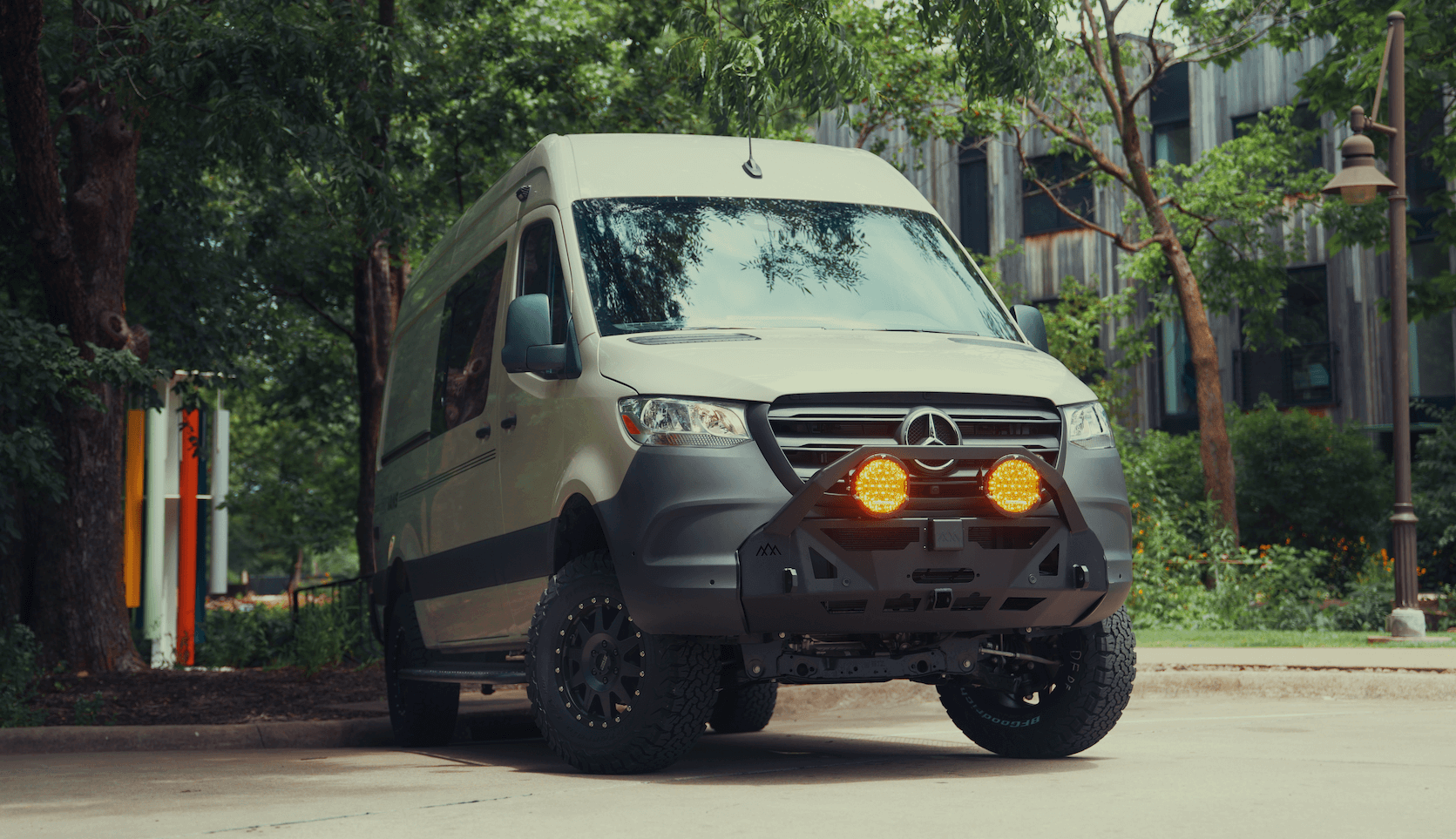Recreational Vans

A camper van adds length, height, and weight compared to a daily driver, yet it stays far more manageable than a large motorhome. Most camper vans sit in the Class B category, typically 18 to 24 feet long, around 7 feet wide, and 9 to 10 feet tall depending on racks or roof equipment. That footprint affects turning radius, mirror use, and how the van responds to wind and uneven pavement.
Braking takes more planning because additional mass needs more distance to stop. Leave a larger gap, scan farther ahead, and roll off the throttle earlier. Height awareness matters too. Know your exact clearance with any roof accessories and keep it noted near the dash. Low branches, parking garages, and older bridges can become hazards if you do not have that number in mind.
Crosswinds feel different. A tall side profile catches gusts, especially when passing tractor trailers or cresting exposed ridgelines. Gentle steering inputs and a bit less speed steady the van quickly. The good news is that modern platforms with independent front suspension and traction control track straight and stay composed when you keep movements smooth.
Parking and low speed control set the tone. Spend thirty minutes in an empty lot practicing these basics:
Lane placement is your friend on narrow roads. Keep a steady line that leaves predictable space on both sides, do not hug the shoulder where debris collects. On curves, slow before the bend, hold light throttle through the arc, and let the van settle before adding speed.
Braking technique matters on long grades. Use a lower gear for engine braking so service brakes do not overheat. If you smell brakes or feel a soft pedal on a downhill, pull off and let them cool. In rain, extend following distance even more and avoid abrupt pedal inputs. Tires set the tone for grip and comfort, so match your load rating and psi to the actual build weight, then check pressures when cold.
Visibility turns stress into calm. Large side mirrors with integrated blind spot glass and a well aimed backup camera help you read the road. Clean the camera lens often, especially on gravel or in winter. At night, proper headlight aim and quality fog or auxiliary lights improve contrast without glare.
Turning radius depends on wheelbase. A shorter wheelbase rotates easily in cities, while a longer wheelbase tracks straighter on the highway. Be mindful of tail swing when exiting angled spots or cutting a tight corner near posts or rocks.
Weight management changes how the van feels. Roof loads raise the center of gravity and make crosswinds more noticeable. Heavier items belong low and between the axles to keep balance predictable. Inside the van, cabinet placement, water tanks, and spare gear should not overload one side.
Speed is a choice, not a goal. In rough crosswinds, slowing by five to ten miles per hour can settle the chassis quickly. On two lane roads, ease over to let faster traffic pass when safe. Confident van driving is not about being first to the next pullout, it is about staying smooth and unruffled mile after mile.
A well built camper van can feel planted and quiet. Suspension tuning that matches real world weight reduces sway and brake dive. Quality tires with the right load rating sharpen steering response. Smart weight distribution keeps the chassis neutral so crosswinds feel like a nudge, not a shove. Driver view upgrades such as multi angle cameras, parking sensors, and upgraded lighting make tight spaces and night driving simpler.
If you are exploring your first build or planning an upfit, you can choose features that support the way you drive. That might include a shorter wheelbase for urban agility, or a longer wheelbase for highway stability. Roof racks and gear carriers should be selected with weight and height in mind, not just capacity.
When you want a van that feels easy from the first turn, partner with specialists who design around real use, not just a parts list. Explore Recreational vans, consider a tailored fit with a Custom build van, or review finance friendly options in Mainstream vans.
A camper van is not hard to drive, it is simply different. Give yourself space, practice the fundamentals, and let the chassis do the work. With the right setup and a calm approach, you will settle into a steady rhythm that makes long miles feel easy.
OZK Customs builds and upfits vans to drive as good as they look. We tune suspension for your real travel weight, improve visibility with camera and lighting upgrades, and design storage that keeps the van balanced and quiet. Our shop in Fayetteville Arkansas focuses on builds that feel confident on mountain passes, crosswinds, and city streets alike. Tell us how you travel and we will craft a solution that fits.
Want a van that drives with confidence Start your build conversation now. Explore Recreational vans, learn about a Custom build van, or browse Mainstream vans to find your platform.
Ready to make driving your camper van easy OZK Customs designs and upfits vans that track straight, brake confidently, and park with less stress. From suspension tuning to driver view upgrades and smart storage that keeps weight balanced, we build for real road feel. Tell us how you travel and we will tailor a van that drives the way you want. Start your custom build today.
ADDRESS:
6159 E Huntsville Rd, Fayetteville, AR 72701
PHONE:
(479) 326-9200
EMAIL:
info@ozkvans.com